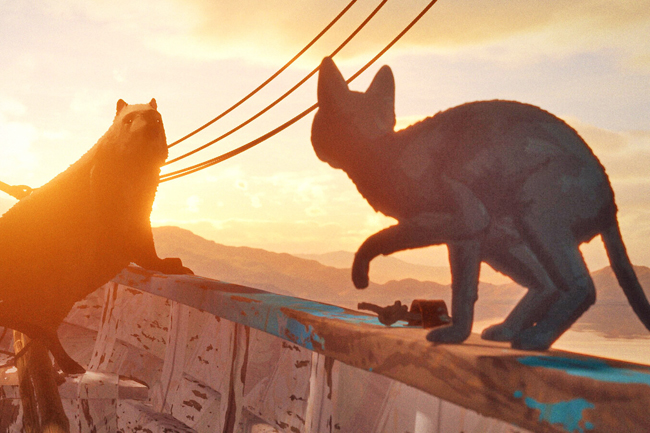In recent years, animation has stepped into the spotlight – not as a genre, but as a formidable force in storytelling.
The global triumph of Flow (2024), an independent animated adventure film by Gints Zilbalodis, which swept the Academy Award for Best Animated Feature and the Golden Globe for Best Animated Film, has reignited a perennial question that still lingers within film circles: Is animation cinema?
In her article “Is animation cinema? Reflections on motion pictures”, a lecturer in the Department of Media and Communications at Curtin Malaysia Dr Yukie Hori delves into this very debate, taking readers through philosophical, historical and technological perspectives that challenge traditional definitions.
“Animation is cinema. Animation is not a genre for kids. It’s a medium.”
So declared celebrated filmmaker Guillermo del Toro at the 2022 Golden Globes, a statement that resonated widely within the creative community.
For decades, animation was pigeonholed as child-centric entertainment – dominated by colourful characters and moral lessons wrapped in catchy tunes. But as Dr Hori noted, this reductive view fails to acknowledge the vast narrative and aesthetic breadth the medium has to offer.
“While much of mainstream animation targets younger audiences, the medium encompasses works made for adults, despite their cartoonish aesthetic – examples include The Simpsons, South Park, Akira and even Shrek,” she explained.
Indeed, animation is not a genre but a method of storytelling, capable of spanning a multitude of genres from romantic dramas to existential thrillers. To label it strictly as ‘children’s content’ is akin to claiming live-action films are all action blockbusters – both assumptions are sorely misplaced.


MEDIUM VS MESSAGE
Del Toro’s view of animation as a medium is widely accepted, but not without contention. Dr Hori referenced animation scholar Raz Greenberg, who provocatively states, “Animation is not a medium, nor is it medium-dependent.”
According to Greenberg, animation manifests across formats – film, video, flipbooks, digital code, even ancient shadow puppetry – and cannot be tied solely to one technological mode of expression.
This viewpoint contrasts with del Toro’s assertion and opens a wider conversation: if animation is neither a genre nor strictly a medium, what is it?
The traditional definition of animation – “frame-by-frame” movement – has also been blurred by modern techniques. Today, animators use coding, artificial intelligence, and real-time rendering engines. In this evolving landscape, the lines between what counts as cinema and what falls outside it are less clear than ever.
CINEMA: CAPTURING REALITY?
To understand whether animation qualifies as cinema, Dr Hori revisits the work of André Bazin, a towering figure in film theory.
Bazin argued that cinema is rooted in the mechanical reproduction of reality – something recorded by a camera rather than drawn or imagined. This makes live-action cinema a form of objective capture, while animation, he suggests, is inherently subjective, constructed entirely by human hand or algorithm.
“Cinema, tied to photography and theatre, involves mise-en-scène – organising what exists before the lens. Animation, on the other hand, creates an entire world from scratch,” Dr Hori wrote.
“If cinema is anchored in recorded reality and animation in constructed images, they could be seen as two distinct art forms.”
Yet, she pointed out, this boundary has become more porous. Today’s filmmakers often work with motion capture, green screens, and digital avatars – tools that mix recorded motion with fabricated visuals.
James Cameron’s Avatar, for instance, records actors’ performances but presents them through digitally crafted beings. What then distinguishes it from high-end animation?
REIMAGINING SHADOWS ON THE WALL
To drive her point home, Dr Hori invoked Plato’s Allegory of the Cave. In the fable, prisoners interpret the shadows on a cave wall as reality, not knowing they are mere projections.
Cinema and animation both trade in shadows – fabricated images that stir emotion, provoke thought, and mirror life in uncanny ways.
“Recent studies of prehistoric cave art suggest that torchlight may have been used to animate images of animals scratched or painted onto stone walls,” she observed.
“The desire to replicate nature, to create and experience alternative realities, seems deeply rooted in human history.”
From flickering flames on cave walls to flickering pixels on cinema screens, the essence remains unchanged: the yearning to tell stories that move us.
BRIDGING THE DIVIDE
So, is animation cinema?
If cinema’s core purpose is to communicate through moving images – telling stories, conveying emotions, provoking thought – then the answer must be yes. Animation, like live-action cinema, has the power to capture the human condition, often with greater visual freedom and emotional resonance.
As Dr Hori concluded, “If both forms aim to simulate movement, convey stories, and evoke emotions, is the distinction between them as rigid as it once seemed? Perhaps not. From this vantage point, I find myself agreeing with del Toro: Animation is cinema.”
As the world becomes increasingly dominated by digital imagery, it may be time to discard old definitions and embrace the evolving, hybrid nature of motion pictures.
Whether shot through a lens or rendered pixel by pixel, cinema’s beating heart lies not in its medium, but in its meaning. – Features Desk






